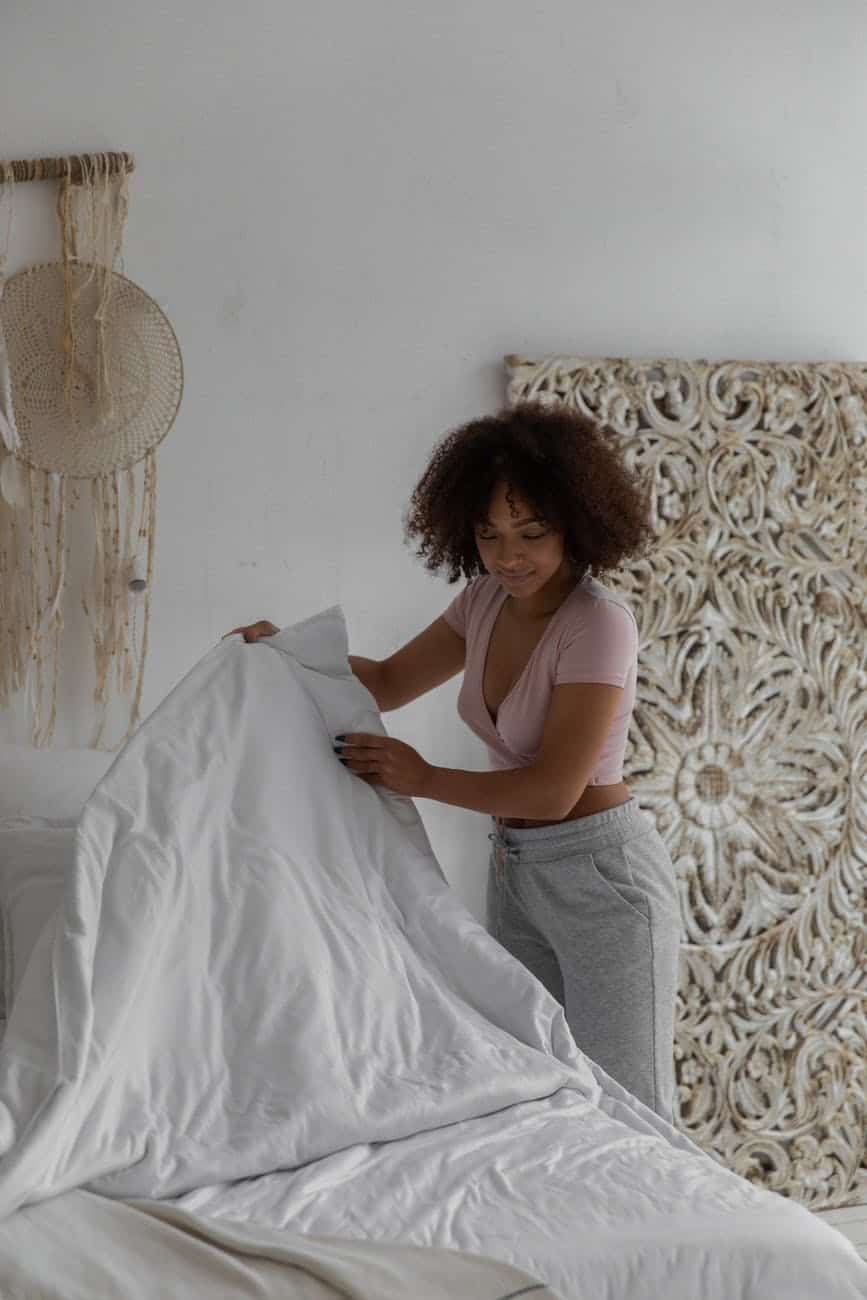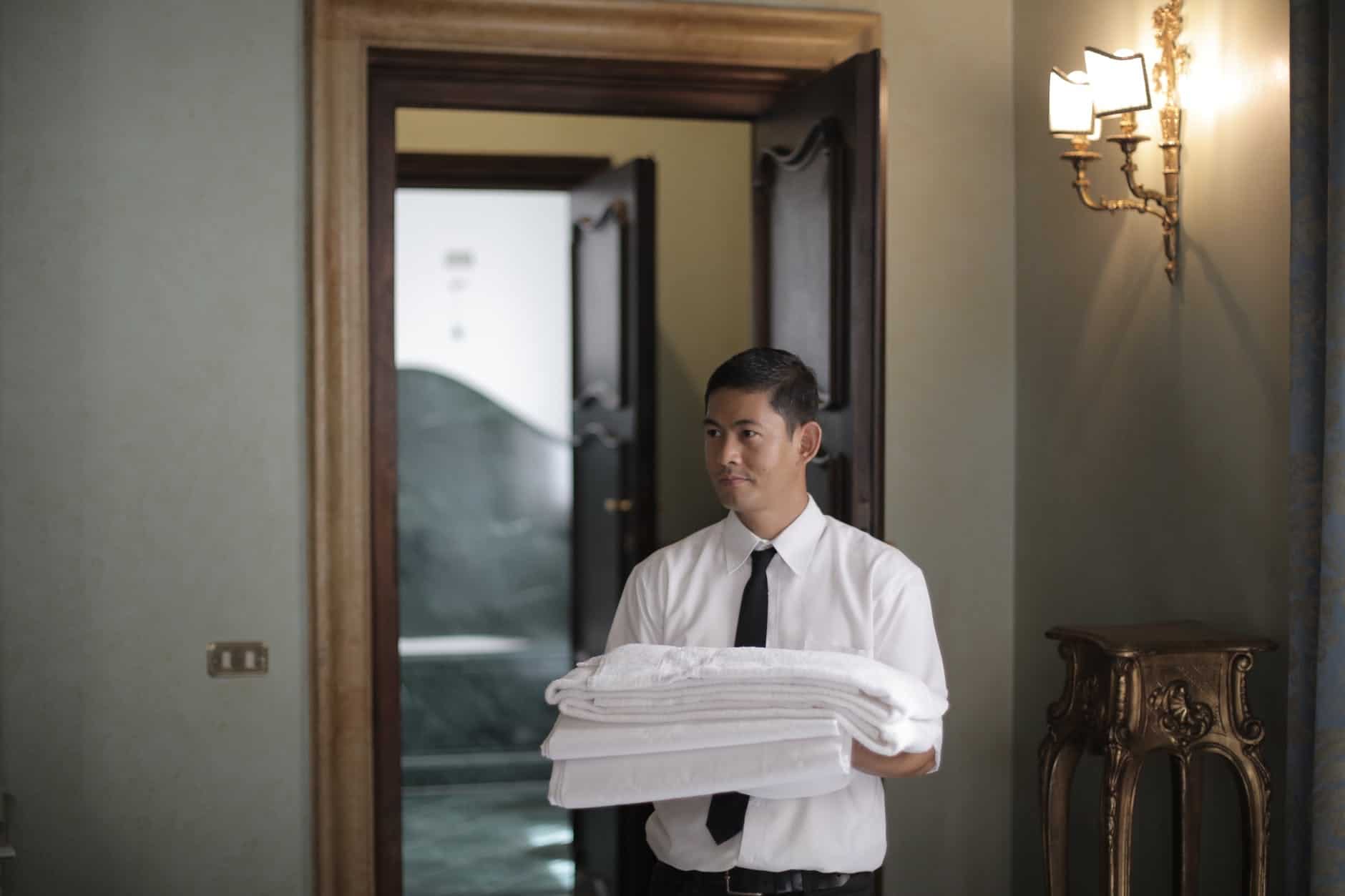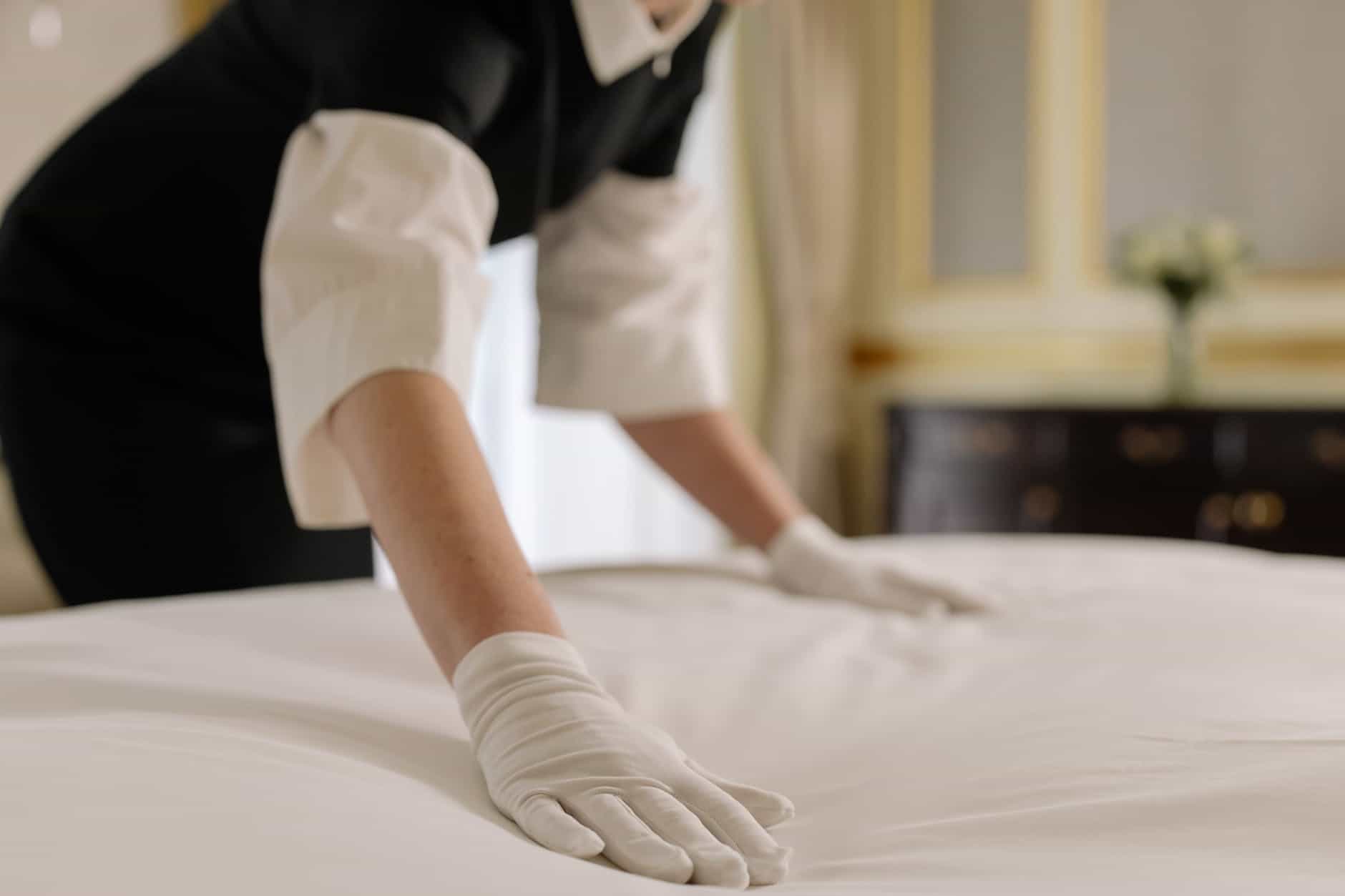Flat Sheet vs Fitted Sheet: What’s the Difference?
Is it a flat sheet or a fitted sheet? What's the difference? It may seem like this is an easy question to answer, but there are actually some important differences. A lot of people think that all sheets are pretty much the same and just prefer one style over another for personal preference.
The truth is that these two types of bedding serve different purposes and therefore have different characteristics. Let's explore what makes them so different!
Disclaimer: As an Amazon Associate I earn from qualifying purchases.
What Is a Flat Sheet?
The flat sheet is a loose, rectangular material that lies on top of the bed without any elastics to keep it in place. Hence, it’s also known as a top sheet. It’s usually the same material as your regular fitted bed sheets (more about that later) that wraps around and under your mattress.
The flat bed sheets are usually included in a winter bedding set because they're considered to be helpful for maintaining body temperature. They may have insulating properties depending on the material they're made from.
What Is a Flat Bed Sheet For?
A flat sheet, also known as a top sheet, is actually meant to protect your duvet cover. It’s like a barrier between you and your duvet so that you can wash your flat sheet instead of constantly washing your duvet cover. Flat sheets can also be used for decorative purposes.
They can be a pleasant pattern or plain clean look when you first walk into the bedroom. Having flat sheets on your bed can also help you regulate your temperature at night. It can be an extra layer to insulate heat under your duvet or blanket. But if you are getting too hot, you can also remove the top layer and just sleep under a flat sheet instead.

Pros and Cons of Flat Sheets
Pros:
Cons:
What Is a Fitted Sheet?
A fitted sheet covers the bed and stays in place providing a smooth sleeping surface. It’s in direct contact with you all night, and it protects the mattress. It’s also a rectangular-shaped material, like the flat sheet, but it is made with elasticized corners that tuck under the mattress to keep the sheet in place all night.
What Is the Fitted Sheet For?
Fitted sheets are used primarily to keep a layer of fabric between you and your mattress. This protects the mattress from becoming dirty and saves you the trouble of having to constantly wash your mattress. Instead, you simply wash your fitted sheet.
Pros and Cons of Fitted Sheets
Pros:

Cons:
Why Do Hotels Use Flat Sheets Instead of Fitted?
The hotel industry washes their sheets constantly - thankfully! But this does mean the sheets go through a lot of wear and tear. Hotels would be constantly throwing away their fitted sheets if they used them exclusively.
The elastic band wouldn’t hold up for very long after so many washes. It would lose its elasticity and its shape. So, instead of wasting money and sheets, the hotel industry usually opts for using flat sheets as fitted sheets.
This means they fold the corners in and lay a flat sheet on top of the mattress to act as the barrier between the sleeper and the mattress. The flat sheet is more flexible for various sizes of mattresses and it will have a much longer lifespan under so much strain from constant washes.

What is Best: Fitted vs Flat Bed Sheets?
The answer to this all depends on who you ask. The answer is so relative. Some people tend to use flat sheets as well as the usual fitted sheets. Others had never heard of such a thing as a flat sheet until they saw it was sold with the fitted sheet they were shopping for.
Certain cultures dictate whether you use them or not. In some circles, a flat sheet in your bedding is a sign of class and dignity. Consider as well that hotels almost always include a flat sheet with your bed ensemble.
This means we do seem to associate a flat sheet with luxury and “fancy” life. The truth is that if you buy a luxurious sheet set, you’ll likely want to use all the sheets they include.
Whatever you’re used to or prefer there are pros and cons to using them. The fitted bed sheet is a widely accepted necessity for bed hygiene and comfort. The flat sheet, however, seems to be a choice and optional. There are reasons to choose it to enhance your comfort, warmth, and save you from the extra work of constantly washing your duvet cover.
But, some people do just view it as one more item of unnecessary bedding to have to wash. Between the two, the winner would have to be the fitted bed sheet.
Read More: How to Keep Your Sheets from Coming Undone?
Why Choose Organic Bed Sheets?
Organic bed sheets made from organic certified materials. There is an extensive range of natural sheets available online: organic cotton sheets, wool sheets (with natural moisture resistant properties and temeperature control), eucalyptus sheets (perfect for warm nights), bamboo sheets and hemp sheets. They're a healthier choice than synthetic sheets made from polyester or microfiber.
Organic flat and fitted sheets don't contain any toxic chemicals that could come in contact with your skin and your body. They are also more eco-friendly because they don't require pesticides or herbicides to grow, making them better for the environment.
The use of harsh chemicals can take its toll on your sensitive skin and the respiratory system even though it's not always visible. If you are allergic to synthetic products, it is best to opt for organic bed sheets. The chemicals used to treat synthetic materials can cause allergic reactions.
Organic bed sheets are more durable and last longer. They don't pill or fray after a few washes as compared to regular synthetic sheets.
When buying organic fitted and flat sheets, make sure they are GOTS certified. This certificate guarantees that the bed sheets are pesticide-free and made from organic materials.

Conclusion
When choosing bed sheets, it's important to know flat sheet vs fitted sheet. As flat sheets may seem like a more luxurious option, fitted sheets are so much more practical. They fit snugly around your bed and you don't have to be tucked underneath your mattress.
While some argue that flat sheet folds easily while fitted sheet is not that easy to store, it seems to be its only advantage over fitted sheets.
We always recommend using organic fitted sheets to reduce your exposure to toxic chemicals and their effect on the environment. To create a bedroom free from toxins, consider buying organic pillows, organic bedding sets and blankets.

